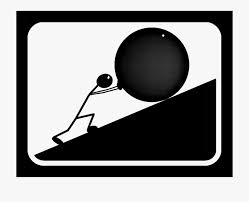Mastering Workplace Communication: 15 Proven Strategies for Success
Effective communication is the cornerstone of any successful workplace. It fosters collaboration, builds strong relationships, and ultimately drives productivity. This comprehensive guide, developed by communication expert AckySHINE, outlines fifteen essential techniques to elevate your communication skills with colleagues and superiors, transforming your professional interactions and contributing to a more harmonious work environment.
Active Listening: The Foundation of Understanding
Active listening is more than just hearing; it's about truly understanding the speaker's message. Maintain eye contact, use nonverbal cues like nodding to show engagement, and paraphrase key points to confirm comprehension. This demonstrates respect and empathy, building trust and fostering stronger working relationships. Active listening ensures that misunderstandings are minimized, leading to clearer communication and more effective collaboration.
Clarity and Conciseness: Ensuring Your Message is Heard
Avoid jargon and overly complex language. Get straight to the point, ensuring your message is clear, concise, and easily understood by all recipients. A well-structured and succinct message avoids confusion and ensures that your key points are readily grasped, maximizing efficiency and minimizing the potential for misinterpretation.
Decoding Nonverbal Communication: Reading Between the Lines
Nonverbal cues—body language, facial expressions, and tone of voice—often communicate as much, or more, than words. Pay attention to your own nonverbal communication to ensure it aligns with your message, and observe others' nonverbal cues to gain a deeper understanding of their perspectives and emotions. This heightened awareness enhances your ability to navigate interpersonal dynamics and build more effective connections.
Empathy and Understanding: Building Bridges of Connection
Cultivating empathy is crucial for effective communication. Put yourself in the other person's shoes to understand their perspective, even if you don't necessarily agree with it. This approach fosters understanding, builds rapport, and promotes a more collaborative and supportive work environment. Showing empathy demonstrates respect and creates a positive atmosphere conducive to open communication.
Open-Mindedness: Embracing Diverse Perspectives
Approach communication with an open mind, welcoming diverse perspectives and ideas. Listen respectfully to differing viewpoints, even if they challenge your own. This fosters inclusivity, encourages creative problem-solving, and contributes to a richer and more innovative work environment. Valuing diverse opinions enhances the overall quality of decision-making and fosters a sense of belonging.
Constructive Feedback: A Catalyst for Growth
Provide constructive feedback that focuses on behaviors and outcomes, not personal attacks. Offer specific examples and suggest actionable steps for improvement. Deliver feedback respectfully and privately whenever possible, focusing on helping the individual grow and improve. This approach fosters a culture of continuous learning and improvement.
Conflict Resolution: Navigating Disagreements Effectively
Conflicts are inevitable. Address them promptly and professionally, utilizing active listening and empathy to find mutually agreeable solutions. Compromise and collaboration are key to resolving conflicts constructively and maintaining positive working relationships. Effective conflict resolution prevents escalation and preserves a healthy and productive work environment.
Emotional Intelligence: Mastering Your Emotions and Others'
Emotional intelligence involves understanding and managing your own emotions and recognizing and responding appropriately to the emotions of others. This skill is invaluable in navigating difficult conversations and building strong relationships. High emotional intelligence leads to improved communication, stronger teamwork, and increased overall productivity.
The Power of Written Communication: Crafting Effective Messages
Written communication requires precision and professionalism. Pay close attention to grammar, tone, and clarity in emails and other written correspondence. Proofread carefully before sending any communication to ensure accuracy and professionalism. Well-crafted written communication reinforces credibility and ensures your message is understood accurately.
Time Management: A Cornerstone of Effective Communication
Effective communication is enhanced by good time management. Prioritize tasks, set realistic deadlines, and avoid procrastination. Being organized and punctual demonstrates professionalism and reliability, fostering trust and respect among colleagues and superiors.
Team Building: Strengthening Bonds Through Collaboration
Team-building activities enhance communication and camaraderie. Organize social events or participate in group projects to strengthen relationships and create a more cohesive team. Team building fosters a sense of community and enhances collaboration, leading to a more productive and enjoyable work environment.
Networking: Expanding Your Professional Connections
Networking expands professional relationships beyond your immediate team. Attend conferences, join professional organizations, and connect with colleagues on professional platforms like LinkedIn. Networking provides opportunities for learning, collaboration, and mentorship, broadening your professional horizons.
Appreciation and Recognition: Fostering a Positive Environment
Expressing appreciation and recognition for the efforts of colleagues and superiors fosters a positive and supportive work environment. A simple thank you, a genuine compliment, or public acknowledgement boosts morale and strengthens relationships. Regular appreciation enhances motivation and reinforces a culture of mutual respect.
Adaptability: Tailoring Your Communication Style
Effective communicators adapt their style to suit different audiences and situations. Be flexible and willing to adjust your approach to best connect with others, considering their communication preferences and cultural backgrounds. Adaptability is crucial for effective communication in diverse settings.
Seeking Feedback: Continuous Improvement
Regularly seek feedback from colleagues and superiors on your communication style and areas for improvement. This proactive approach demonstrates a commitment to continuous growth and helps to refine your skills. Seeking feedback ensures you remain adaptable and responsive to the evolving needs of the workplace.
Conclusion: Embracing the Journey of Communication Excellence
Improving workplace communication is an ongoing process. By consistently practicing these techniques, you can cultivate stronger relationships, enhance collaboration, and contribute to a more productive and fulfilling work experience. Embrace the journey of continuous improvement, and watch your communication skills flourish.
Share your insights and experiences below! What communication techniques have proven most effective for you?
```

